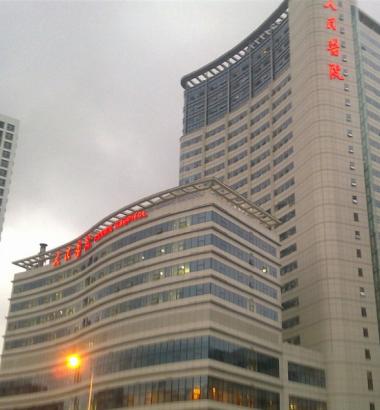
China’s Medical Mayhem
The Chinese government is tolerating violent protests over medical malpractice—for now.

The Chinese government is tolerating violent protests over medical malpractice—for now.
In Shanghai, angry relatives of a patient who died at a local hospital in 2011 (after doctors allegedly denied treatment) vented their fury by stabbing 10 doctors. In another incident, in Nanchang, a patient death touched off a pitched battle that involved scores of people and left 15 injured.
According to official data from the Chinese Ministry of Health, nearly 10,000 “grave incidents” surrounding medical disputes occurred in 2006, injuring more than 5,000 hospital employees and causing some $25 million in property damage. Scattered data and anecdotal evidence suggest that those numbers have been rising rapidly in recent years. Police have fled protestors out of fear for their own safety, hospitals have issued bulletproof vests to their employees, and one military hospital installed televisions with “photos of sexy nurses” to “ease the nervous atmosphere.”
Changes in China’s health care policies are one cause of the new conflicts, writes Benjamin L. Liebman, a law professor at Columbia Law School, in Columbia Law Review. Under Deng Xiaoping’s economic reforms, Beijing expanded the number of people with health care coverage but reduced the benefits. Chinese citizens now pay more than 60 percent of their medical expenses out of pocket. Meanwhile, suffering a dearth of government funding, hospitals have become desperate to turn a profit and increasingly unable to provide adequate medical care. Doctors routinely overcharge for basic exams, prescribe unnecessary and expensive medications, and accept bribes from drug companies.
Since patients and their families are paying from their own funds, and frequently receive unduly optimistic information about illnesses and injuries, they expect nothing less than a full recovery. In addition, media coverage of hospital corruption breeds distrust of the system.
Liebman compared medical malpractice disputes from within and without the court system, studying how Chinese lawyers and judges operate under a Communist Party regime that often distrusts them. “Disputes are resolved not in the shadow of the law, but through micromanagement by the state in the shadow of protest,” he observes. “Party-state officials appear unwilling to let go of this role, particularly in a time of rapid change.”
“Hospitals settle the overwhelming majority of cases, generally more than 90 percent,” he says, and the payouts tend toward the generous. “Settlements are often made with little regard to legal provisions and often exceed the amounts that would be payable in court.” In 2009 the average damages awarded in one municipality was about $7,500, not an insignificant amount in a country where the income per capita is less than $5,000.
On a local level, government officials—whose superiors sometimes evaluate them based on how well they resolve disputes—have pushed back. Various municipal regulations prohibit raising banners outside hospitals, building shrines around the deceased, and threatening medical staff.
But back in Beijing, party and government higher-ups may find the protests useful. China lacks independent, official oversight in most areas of public life, so the protests provide a sort of spot check for the health care system. “Permitting protest may prevent escalation, play a useful oversight function, and provide the regime with information,” Liebman says. In addition, medical protestors typically seek money or specific punishments, not political change, so the party doesn’t view them as a threat.
This delicate balancing act, between allowing public outrage and maintaining control, reveals confusion over the future of the Chinese state. Government and party officials regularly speak of strengthening the courts and respecting the rule of law, but their comfort with handling medical malpractice through an informal system that begins with violent protests and ends with generous settlements reveals an “official distrust of the formal legal sphere.”
Some reform is possible. The Supreme People’s Court is trying to “streamline” medical malpractice litigation and make medical review boards fairer and more transparent. Suggested reforms to the nation’s health care system could reduce the inequality of access between rich and poor, urban and rural. But Liebman believes that the grievances and violent conflicts will continue as long as the courts and regulations take a back seat to concerns about “social stability.”
“Violence and protest are now part of the cycle of dispute resolution,” Liebman concludes, adding that “the trend toward resolution of claims through protest and violence appears likely to become more widespread absent significant reforms.”
THE SOURCE: “Malpractice Mobs: Medical Dispute Resolution in China” by Benjamin L. Liebman, in Columbia Law Review, Jan. 2013.